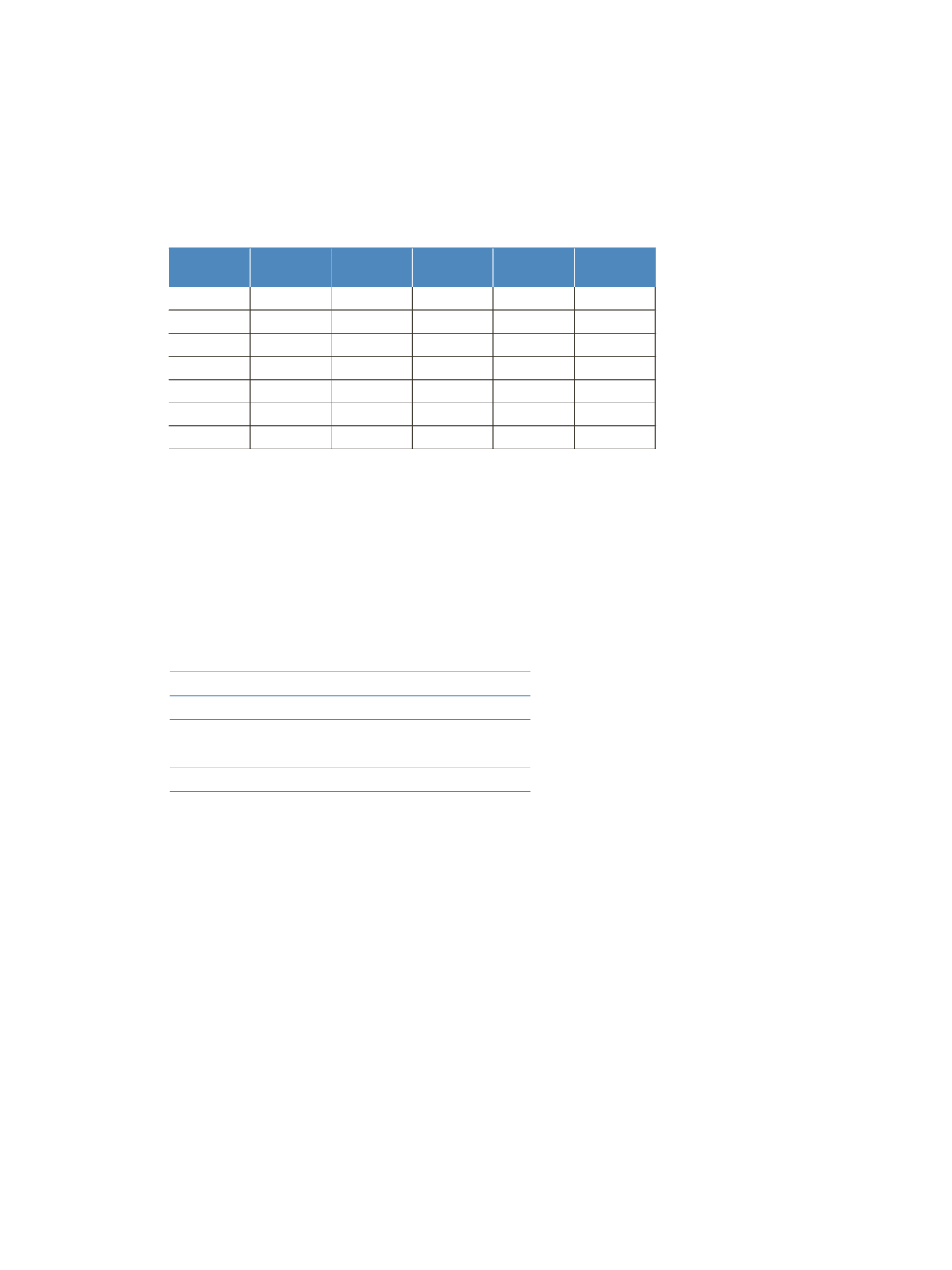

2
Liquid Chromatography
Chromatographic separations were performed with a
Thermo Scientific Accela 1250 pump and Accela Open
autosampler. The analytical column was a Thermo
Scientific Accucore PFP column (50 × 2.1 mm, 2.6 μm
particle size). The column was maintained at room
temperature. Details of the LC gradient and information
on the mobile phases (MP) are shown in Table 2. The
injection volume was 40 μL.
Table 2. LC gradient
MPA: 10 mM ammonium acetate and 0.1% formic acid in water
MPB: 10 mM ammonium acetate and 0.1% formic acid in methanol
MPC: ac
etonitrile:isopropanol:acetone 9:9:2 (v/v/v)
Mass Spectrometry
MS/MS analysis was performed on a Thermo Scientific
TSQ Vantage triple stage quadrupole mass spectrometer.
The mass spectrometer was operated with a heated
electrospray ionization (HESI-II) source in positive
ionization mode. The MS conditions were as follows:
Spray voltage (V):
4000
Vaporizer temperature (°C):
300
Sheath gas pressure (arbitrary units)
50
Auxiliary gas pressure (arbitrary units)
15
Capillary temperature (°C)
300
Data were acquired in selected-reaction monitoring
(SRM) mode. Detailed SRM settings for the 19 drugs and
their internal standards are shown in Table 3. For each
analyte and internal standard, two SRM transitions were
monitored. One was used as the quantifier and the other as
the qualifier. The signal ratio between the qualifier and the
quantifier was used to evaluate the validity of the results.
Results that varied by more than 20% of the nominal
ratio were considered invalid data points.
The validation procedure included tests for: 1) signal
recovery, 2) lower limit of quantitation (LLOQ) and linear
range, 3) accuracy and precision, and 4) carryover.
Time (min)
Flow rate
(mL/min)
Gradient
MPA (%)
MPB (%)
MPC (%)
0.00
0.4
Step
95
5
0
0.50
0.4
Step
90
10
0
1.50
0.4
Ramp
50
50
0
2.00
0.4
Ramp
5
95
0
6.50
0.4
Step
0
100
0
7.75
0.6
Step
0
0
100
8.00
0.6
Step
95
5
0



















